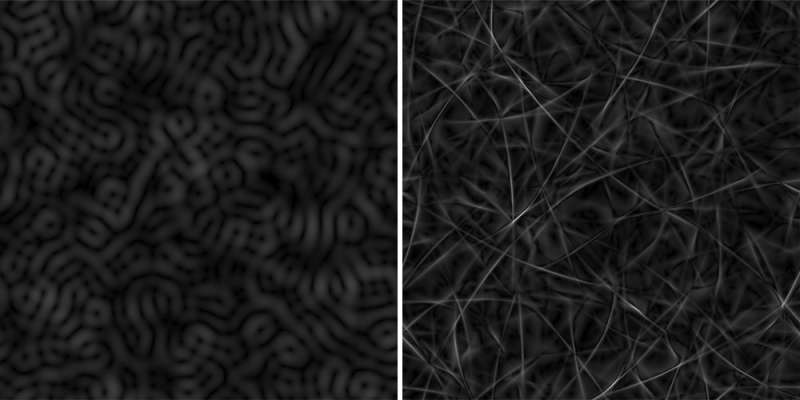October 27, 2016 feature
Shocks in the early universe could be detectable today

(Phys.org)—Physicists have discovered a surprising consequence of a widely supported model of the early universe: according to the model, tiny cosmological perturbations produced shocks in the radiation fluid just a fraction of a second after the big bang. These shocks would have collided with each other to generate gravitational waves that are large enough to be detected by today's gravitational wave detectors.
The physicists, Ue-Li Pen at the Canadian Institute for Theoretical Astrophysics in Toronto, and Neil Turok at the Perimeter Institute for Theoretical Physics in Waterloo, have published a paper on the shocks in the early universe and their aftermath in a recent issue of Physical Review Letters.
As the scientists explain, the most widely supported model of the early universe is one with a radiation-dominated background that is almost perfectly homogeneous, except for some tiny waves, or perturbations, in the radiation.
In the new study, Pen and Turok have theoretically shown that some of these early, tiny perturbations, which are small-amplitude waves, would have spiked to form large-amplitude waves, or shocks. These shocks would have formed only at very high temperatures, like those that occur immediately after the big bang.
The physicists also showed that, when two or more shocks collide with each other, they generate gravitational waves.
The results suggest that both colliding shocks and merging black holes—like those detected earlier this year by the Laser Interferometer Gravitational-Wave Observatory (LIGO) experiment—contribute to the gravitational wave background. Some researchers have previously speculated that the mergining black holes may have formed from the same perturbations that created the shocks and, further, that black holes of this size may make up the dark matter in our galaxy.
However, it would be possible to distinguish between merging black holes and colliding shocks because the gravitational waves emitted by shocks would be detected at far lower frequencies today since the wavelength would have been stretched by the expansion of the universe. Today the gravitational waves from shocks would have frequencies of 3 nHz, as opposed to the 100 Hz regime in which the LIGO experiment currently operates.
Based on their analysis, the scientists think that both current and future planned gravitational wave detectors will be able to detect the frequencies of gravitational waves emitted by shocks. These frequencies correspond to emission times of around 10-4 to 10-30 seconds after the big bang.
Another interesting consequence of shocks in the early universe is that their interactions would have caused the surrounding radiation fluid to rotate, generating vorticity. This means that shocks in the early universe would have generated entropy in an otherwise perfect radiation fluid, in which normally the entropy cannot increase.
The possibility that shocks in the early universe could have generated gravitational waves, vorticity, and entropy could help scientists solve some of the more perplexing puzzles of the early universe, such as why the universe has more matter than antimatter (the baryogenesis problem), as well as the origins of the magnetic fields that are observed in many astrophysical objects.
More information:
Ue-Li Pen and Neil Turok. "Shocks in the Early Universe." Physical Review Letters. DOI: 10.1103/PhysRevLett.117.131301
Also at arXiv:1510.02985 [astro-ph.CO]
Journal information: Physical Review Letters
© 2016 Phys.org





















